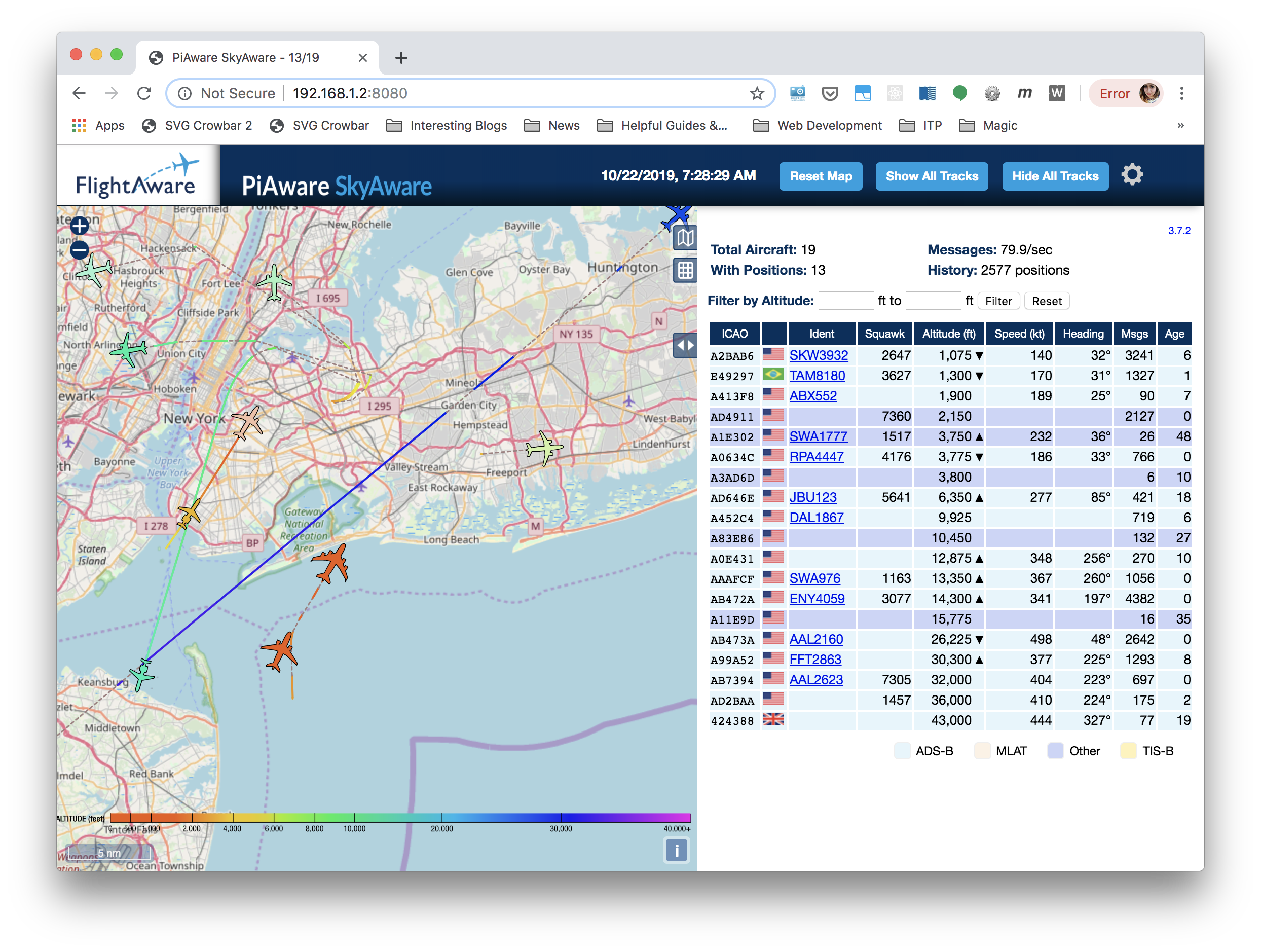This is an overly complicated and inaccurate clock (though perhaps, quite systematic in its inaccuracies).
I wanted to play with the history of how our time, especially across great expanses of land, became standardized. To understand when a train was due to arrive, it had become historically important to have a shared notion of what time it was. In this project, I treat a mode of transportation as a literal arbiter of truth on the question of time. I look at planes that detectable from my apartment, and then check to see if they are running late, early, or on time. I then offset my clock based on the time as kept by the average of the planes above me.
In order to take on this wild and perhaps unnecessary endeavor, I installed dump1090 (a driver for software-defined radio projects) onto a Raspberry Pi hooked up to nifty SDR antenna dongle.


Dump1090 (or technically, it’s current version dump1090-fa), is quite helpful and provides users with a nice little map and quite a bit of data of all of the planes it is able to sense.

Initially, I attempted to use their identifier codes to them programmatically scrape flightaware.com to get information about how delayed (or not) each plane was. But unfortunately, FlightAware, as their business model relies on their ability to sell this data, makes it quite difficult to do (without signing up on their site). So, like a post-naturalist observer, who perhaps watches planes instead of birds, I searched the databases (ah, my digital field guide) myself to identify the planes I saw.
I saved the data here.
Absurd.
Here is the final clock that resulted from these endeavors.
